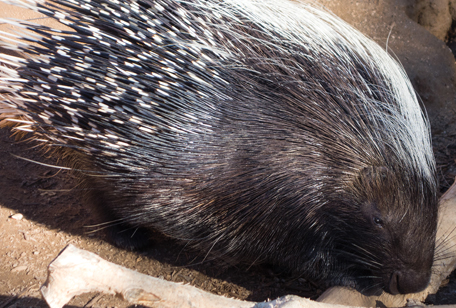
Hystrix africaeaustralis
Africa
Least Concern
A Rodent with Quills
The porcupine is identified by its specialized hairs or quills. These are a defense mechanism against predators like African lions or hyenas. Quills are loosely connected by the follicle, and when a porcupine is nervous or under attack, it spreads out the quills and shakes the lower, hollow-tipped tail quills into a predator for maximum defense. Quills that range from just a few inches up to 1 foot in length are intermixed with spines reaching up to 21 inches. Porcupine quills are not barbed and cannot be “shot.”
Nutrition
Porcupines are herbivores that prefer bark, vegetables, fruits, bulbs and leaves; however, they will consume insects, carrion and small vertebrates. They have also been observed gnawing on bones (presumed to be for the calcium) they come upon in their home ranges which are leftovers from predator hunts.
Family Living
Porcupines’ typical family structure consists of a monogamous adult pair along with one to two generations of offspring. The family focus is on intensive rearing and teaching of the young. After a 115-day gestation, the one to four “porcupettes” are born with their eyes open and teeth developed.
To learn more, download the Cape Crested Porcupine fact sheet.
